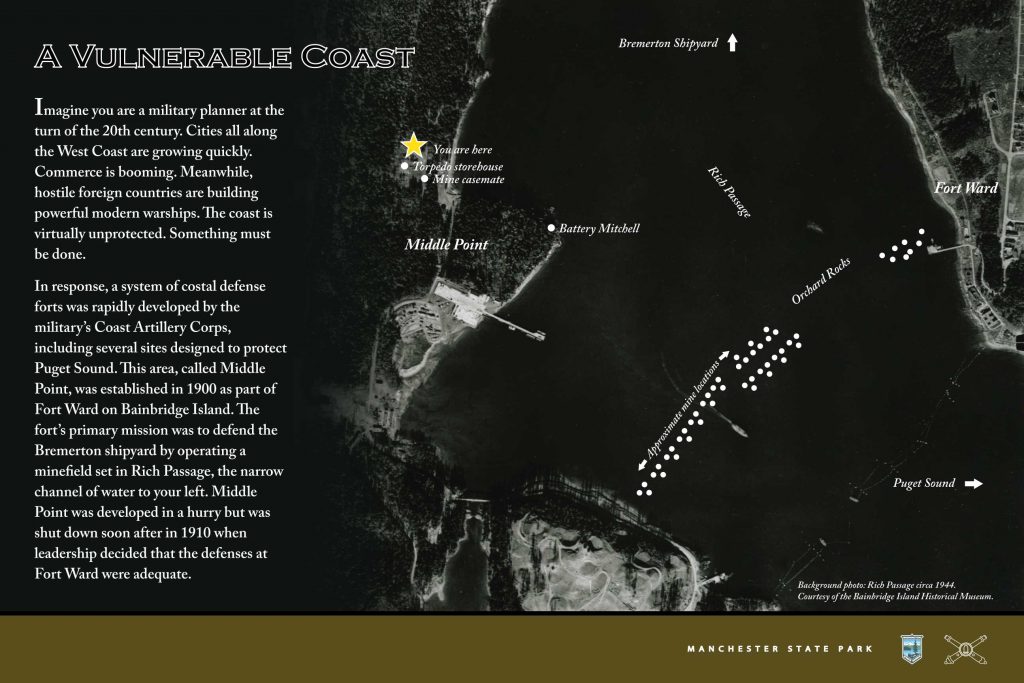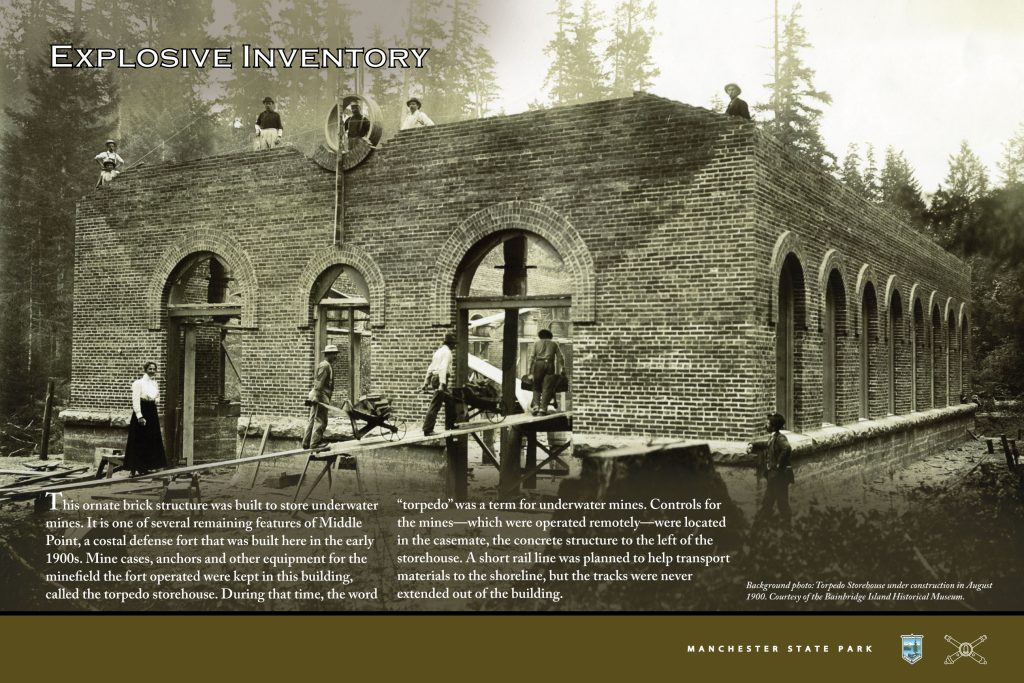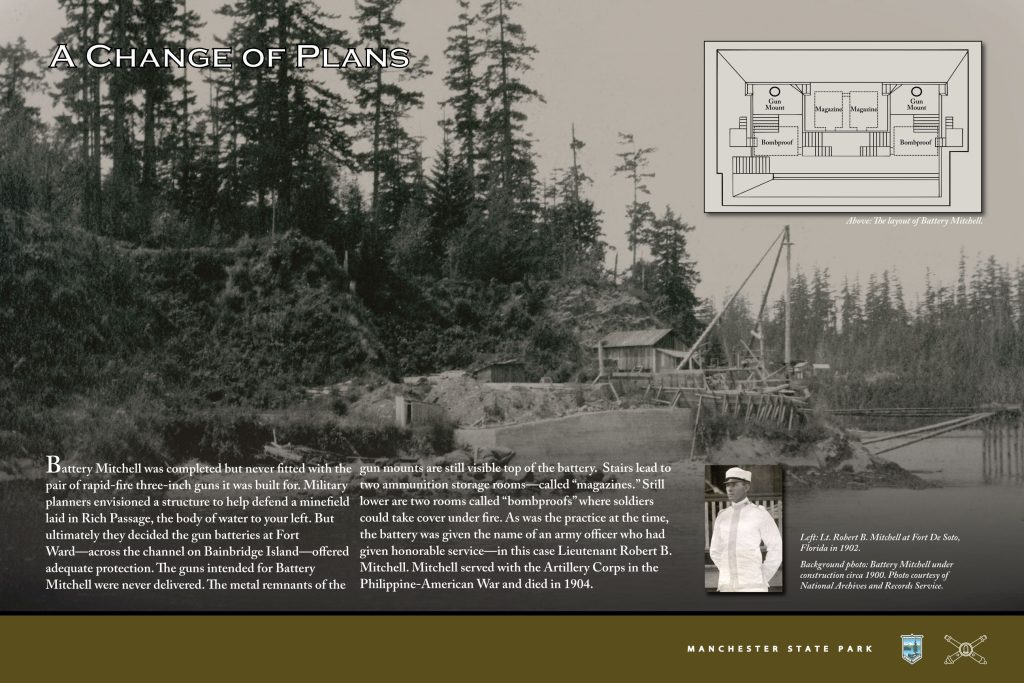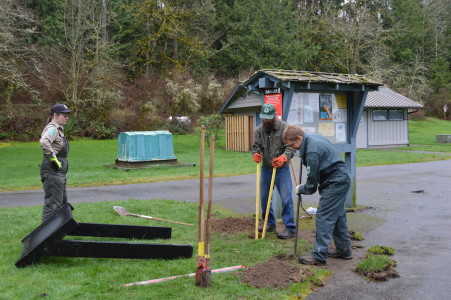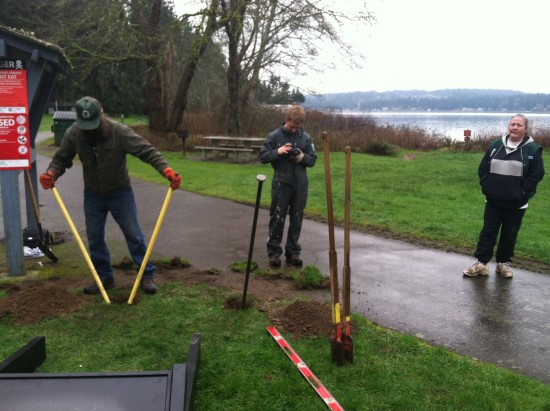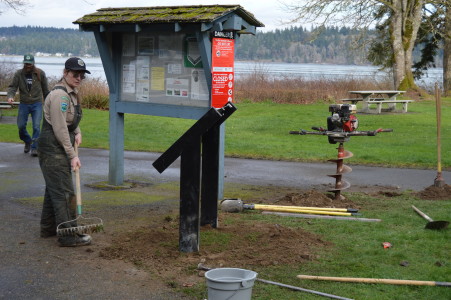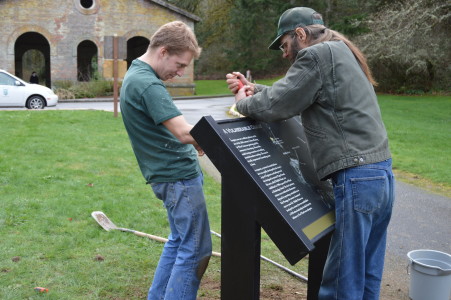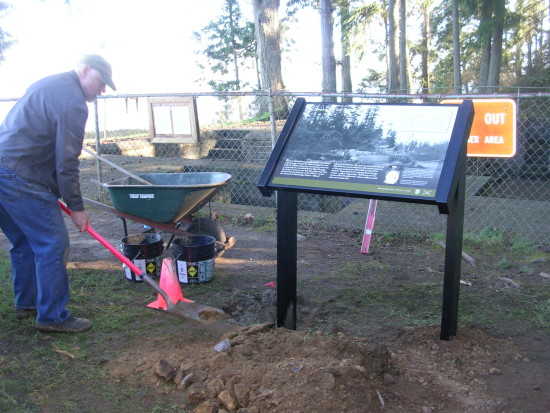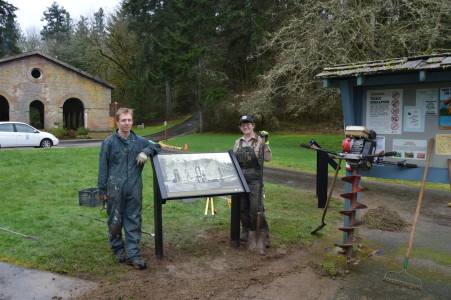“Imagine you are a military planner at the turn of the 20th century. Cities all along the West Coast are growing quickly. Commerce is booming. Meanwhile, hostile foreign countries are building powerful modern warships. The coast is virtually unprotected. Something must be done.”
So begins the story told on three exhibit signs installed at Manchester State Park in 2015. The creation and installation of these signs was paid for with a grant from the Washington State Parks Foundation — one of 10 park improvement projects that happened this year thanks to generous support from our park-loving members.
Puget Sound’s coastal defense history in your state parks
Manchester is one of seven Washington state parks that tell part of the fascinating story of coastal defense preparations in the 20th century. These state parks are: Manchester; Fort Columbia; Cape Disappointment (formerly known as Fort Canby); Fort Ebey (developed later for WWII); and the three sites that make up the “Triangle of Fire”: Fort Worden, Fort Flagler and Fort Casey.
As the new signs at Manchester State Park explain, “a system of coastal defense forts was rapidly developed by the military’s Coast Artillery Corps, including several sites designed to protect Puget Sound.” For a decade, select sites around the Sound were being developed to defend the region through the strategic deployment of large guns on the coast and mines in the water.
These sites never fired upon enemy vessels. In some cases, like at Manchester, the large guns weren’t even installed. Sam Wotipka, Exhibit Development Coordinator at Washington State Parks, points out that, “It’s part of the whole coastal defense story: with the advent of airplanes, the existing plans pretty much became obsolete overnight. It’s a fascinating example of how quickly technology can change things.”
Sharing the story with park visitors
“All of our parks have a great story to tell,” says Wotipka. At Manchester, he saw an opportunity to follow through on broader plans to provide interpretation of coastal defense history. And Manchester State Park contains unique structures even within that broader story. “No point in having historic structures if you can’t share this heritage with park visitors.”
Shawn Douty, Park Ranger at Manchester, agreed. She has been putting on interpretive programs at the park for years. “I was always amazed at how many people wanted to know about the military history of the park,” she observes. “But we lacked signs or brochures that could share the story with more visitors. I felt that the park needed at the least a few well-placed interpretive panels to tell the story.”
Enter the grant from the Washington State Parks Foundation. This funding – collective contributions from our members – was matched by proceeds from the State Park License Plate program. As a result, park staff Douty and Wotipka were able to coordinated the development and installation of three new interpretive signs in the park.
Assisting the staff were volunteers Rick and Anna Dunn, who serve as camp hosts and otherwise contribute a lot of time and effort to state parks, and volunteer Larry Sargent. Park neighbor Ron Bishop contributed content for the signs, including photos he had tracked down and purchased himself. Once the signs were prepared, the crew gathered on site and discovered that, as Wotipka describes, “The holes were harder to dig than we anticipated. The ground was not soft!” It was a long day – and so worth it.
You can go enjoy these exhibits and this wonderful park today! And watch for future improvements: the staff hope to add more exhibits to further enhance your experience at this wonderful park.
About Manchester State Park
Manchester State Park is a 111-acre camping park with 3,400-feet of saltwater shoreline on Rich Passage in Puget Sound. Nestled in woods of Fir and Maple, Bainbridge Island is visible from the beach. Activities include camping, hiking, boating (small watercraft), mountain biking, fishing, diving, volleyball, wildlife viewing, learning about the park’s fascinating history, and exploring nearby Square Lake.
Click here to learn more about Manchester State Park and plan your visit to see the new signs, thanks in part to the support of our generous members.
